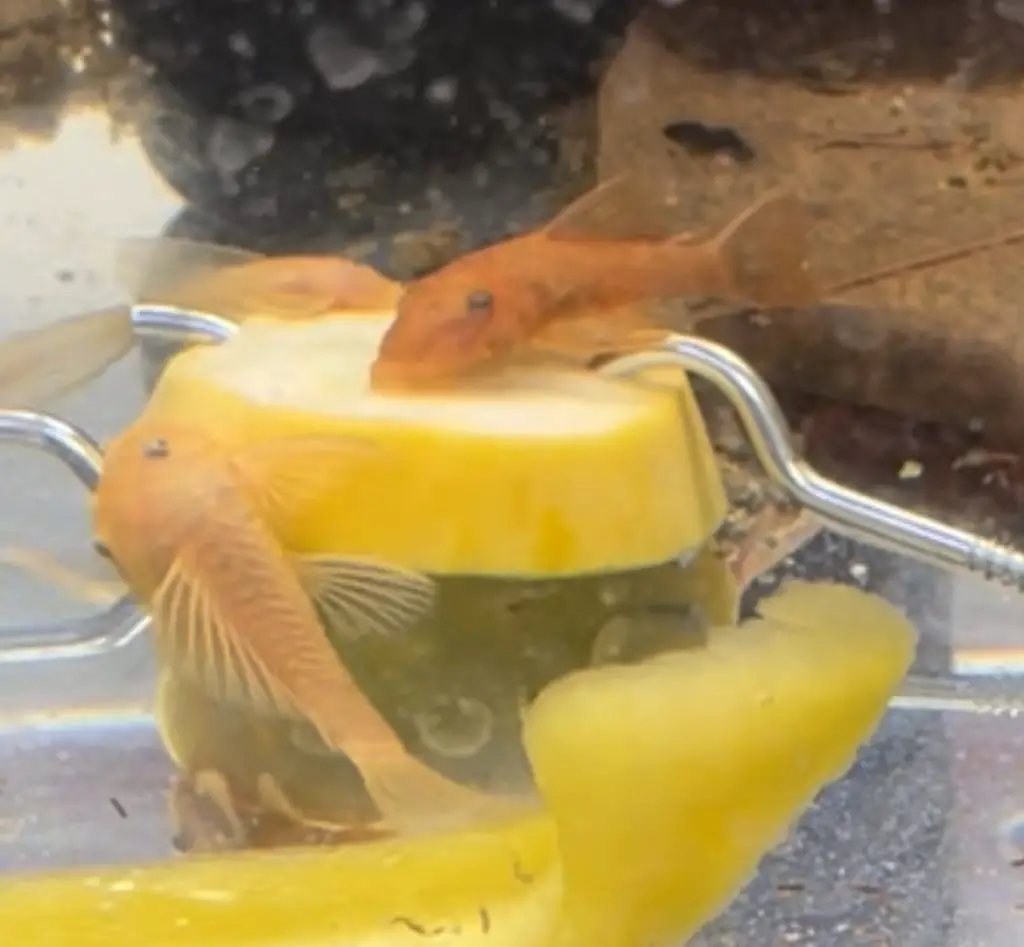Deep within the waters of the Rio Tapajós in Pará, Brazil, resides a mesmerizing creature that captivates both novice and seasoned aquarists alike.
Known by its scientific name Pseudacanthicus sp. (L273), this majestic fish goes by several monikers, including L273, Titanicus Pleco, and Tapajos-leopardsugemalle (in Denmark). Its striking appearance and unique characteristics make it a prized addition to any aquarium.
At first glance, the name “False Acanthicus” may pique your curiosity. Allow us to unravel this intriguing etymology.
The genus Pseudacanthicus derives from the Greek words “Pseud,” meaning false, and “Acanthicus,” meaning spiny or thorny. It refers to the genus’s uncanny resemblance to, yet distinctiveness from, its close relative Acanthicus. This nomenclature sets the stage for the enigma that unfolds in the world of Pseudacanthicus.
The Titanicus Pleco stands out from other Loricariidae species due to its unique characteristics. One distinguishing feature is the presence of longitudinal rows of keels, which are pointed odontodes along the body sides.
Additionally, this species boasts eight or more dorsal-fin rays, setting it apart from most other loricariids. The Titanicus Pleco also possesses seven to eight infraorbitals, five anal-fin branched rays, and hypertrophied odontodes along the snout margin.
Notably, males exhibit brighter and more cosmetically attractive patterning, while females display a more drab appearance.
Among its fellow Acanthicus group members, Pseudacanthicus stands out with the presence of two small plates in the posterior area of the compound pterotic, in contrast to the median plate or absence thereof in others.
Additionally, its narrow premaxillae house a small number of elongated and curved teeth, setting it apart from the rest, except for Leporacanthicus.
One of the defining aspects of the Titanicus Pleco is its captivating appearance. While its markings vary from individual to individual, the best examples are simply breathtaking.
Unbelievably beautiful patterns adorn their bodies, while a distinctive metallic sheen graces the back half of the fish. However, even the less striking individuals possess an allure of their own. It’s this uniqueness that draws aquarists to these captivating creatures.
Sexual dimorphism is evident in Pseudacanthicus. Males flaunt brighter and more visually appealing patterns, adding an extra flair to their overall appearance.
In contrast, females appear more drab, even from a young age. Observing these distinctions adds another layer of intrigue to the world of Titanicus Plecos.
To ensure the well-being of these magnificent fish, it’s crucial to understand their habitat requirements. Originating from the Rio Tapajós in Brazil, Pseudacanthicus thrives in water with a pH range of 6.0 to 7.0 and temperatures between 23.0 and 28.0°C (73.4-82.4°F).
Clean, clear, and well-oxygenated water is essential for their thriving existence.
One aspect that distinguishes Pseudacanthicus from its counterparts is its feeding habits. Unlike some omnivorous or mainly vegetarian plecos, Pseudacanthicus remains a true carnivore.
While they may consume small amounts of vegetation when their preferred food is scarce, their primary diet consists of animal-based protein. It’s important to note that their waste production is considerably lower compared to other plecos of similar size, such as Panaque or Pterygoplichthys.
Creating an ideal environment for Pseudacanthicus also entails providing suitable caves and hideaways for their secretive nature. These plecos require a well-sized cave where they can retreat and feel secure.
Offering them a comfortable and sheltered space will allow them to exhibit their natural behaviors and reduce stress.
While Pseudacanthicus is generally peaceful, it’s important to note their territorial tendencies, which can emerge at a young age. As they grow larger, some individuals become more aggressive and may pose challenges when housed with other large nocturnal fish.
Careful consideration should be given to tankmates that are compatible with their temperament and size.
It’s worth mentioning that the allure of keeping large, robust Loricariids often leads to the temptation of pairing them with equally robust tankmates like Oscars or other aggressive species.
However, in the case of Pseudacanthicus, this may not be the best approach. Despite their defensive capabilities, they can be susceptible to bullying from faster-moving fish of similar size. It’s essential to strike a balance between suitable tankmates and maintaining a harmonious aquatic environment.
The Titanicus Pleco, with its mesmerizing appearance and unique characteristics, stands as a testament to the beauty and diversity found in our underwater world.
Whether it’s the intricate patterns adorning its body or the metallic sheen that dances across its scales, Pseudacanthicus leaves a lasting impression on anyone fortunate enough to witness its presence.
In conclusion, welcoming a Pseudacanthicus sp. (L273) into your aquarium is like inviting a piece of the Amazon’s hidden treasures into your home.
From its false acanthicus identity to its captivating markings and enigmatic behaviors, this pleco is a true gem for any enthusiast.
By understanding its habitat requirements, dietary preferences, and compatibility considerations, you can provide a thriving environment for these majestic creatures. So, dive into the world of the Titanicus Pleco and embark on a journey of discovery that will leave you in awe of nature’s wonders.

